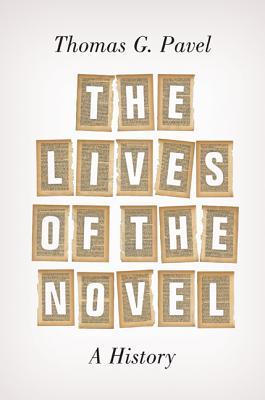A bold new account of the history of the novel, from ancient Greece to the present
This is a bold and original original history of the novel from ancient Greece to the vibrant world of contemporary fiction. In this wide-ranging survey, Thomas Pavel argues that the driving force behind the novel's evolution has been a rivalry between stories that idealize human behavior and those that ridicule and condemn it. Impelled by this conflict, the novel moved from depicting strong souls to sensitive hearts and, finally, to enigmatic psyches. Pavel analyzes more than a hundred novels from Europe, North and South America, Asia, and beyond, resulting in a provocative reinterpretation of its development. According to Pavel, the earliest novels were implausible because their characters were either perfect or villainous. In the eighteenth and nineteenth centuries, novelists strove for greater credibility by describing the inner lives of ideal characters in minute detail (as in Samuel Richardson's case), or by closely examining the historical and social environment (as Walter Scott and Balzac did). Yet the earlier rivalry continued: Henry Fielding held the line against idealism, defending the comic tradition with its flawed characters, while Charlotte Bront and George Eliot offered a rejoinder to social realism with their idealized vision of strong, generous, and sensitive women. In the twentieth century, modernists like Proust and Joyce sought to move beyond this conflict and capture the enigmatic workings of the psyche. Pavel concludes his compelling account by showing how the old tensions persist even within today's pluralism, as popular novels about heroes coexist with a wealth of other kinds of works, from satire to social and psychological realism.
A bold new account of the history of the novel, from ancient Greece to the present
This is a bold and original original history of the novel from ancient Greece to the vibrant world of contemporary fiction. In this wide-ranging survey, Thomas Pavel argues that the driving force behind the novel's evolution has been a rivalry between stories that idealize human behavior and those that ridicule and condemn it. Impelled by this conflict, the novel moved from depicting strong souls to sensitive hearts and, finally, to enigmatic psyches. Pavel analyzes more than a hundred novels from Europe, North and South America, Asia, and beyond, resulting in a provocative reinterpretation of its development. According to Pavel, the earliest novels were implausible because their characters were either perfect or villainous. In the eighteenth and nineteenth centuries, novelists strove for greater credibility by describing the inner lives of ideal characters in minute detail (as in Samuel Richardson's case), or by closely examining the historical and social environment (as Walter Scott and Balzac did). Yet the earlier rivalry continued: Henry Fielding held the line against idealism, defending the comic tradition with its flawed characters, while Charlotte Bront and George Eliot offered a rejoinder to social realism with their idealized vision of strong, generous, and sensitive women. In the twentieth century, modernists like Proust and Joyce sought to move beyond this conflict and capture the enigmatic workings of the psyche. Pavel concludes his compelling account by showing how the old tensions persist even within today's pluralism, as popular novels about heroes coexist with a wealth of other kinds of works, from satire to social and psychological realism.Paperback
$28.95